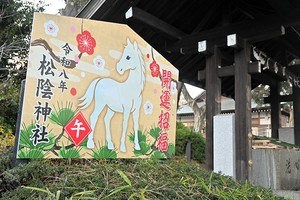By SHOKO RIKIMARU/ Staff Writer
May 18, 2025 at 07:00 JST
The Japan Meteorological Agency plans to issue ashfall warnings and advisories in the event of an eruption on any of the country’s 111 active volcanoes, including Mount Fuji.
JMA officials intend to start operating the system following a preparatory period of several years to develop related technology and spread awareness among the public.
The alerts will cover much wider areas than those in existing volcanic disaster management notifications.
The plan was spelled out in a report released on April 25 by a JMA expert panel, which had been discussing the matter since January.
The report recommends the JMA issue, on a municipality-by-municipality basis, an “advisory” for an expected volcanic ashfall depth of between 0.1 millimeter and 3 centimeters, a “warning” for a depth between 3 cm and 30 cm, and a “stronger alert” for ashfall of 30 cm or more.
Specifics of the “stronger alert,” including what it will be called, will be discussed.
An advisory could be upgraded to a warning if ash continues to fall.
An ashfall warning will likely mean that a “large-scale eruption” has occurred and is expected to affect broad areas. Classification standards for large-scale eruptions include: a plume height of 10,000 meters or more and an eruption duration of 30 minutes or more.
The JMA already operates “eruption notice” and “volcanic alert level” systems for possible evacuations due to volcanic projectiles and lava flows. Those systems, however, target only climbers and residents near the crater.
Volcanic ash can affect much wider areas, depending on wind directions and other factors.
Potential consequences include railroad service suspensions, power failures, degraded tap water quality, and two-wheel drive cars rendered inoperable.
JMA officials hope the new alert system will prompt local governments and citizens to prepare for volcanic eruptions.
The report also says that “socially acceptable” time periods for lifting ashfall advisories and warnings should be thoroughly discussed, given the difficultly in foreseeing how much volcanic ash will be spewed out and for how long.
It recommended interviewing officials of local governments, infrastructure business operators and other entities to come up with suitable time frames.
The new system is being planned largely to help the greater Tokyo area make early preparations for a large-scale eruption of Mount Fuji that could cause blackouts and transportation disruptions.
The Cabinet Office in March issued its first guidelines classifying the risk level of volcanic ash into four stages. The guidelines recommend calling on residents to evacuate areas where the ashfall depth is expected to reach 30 cm or more.
The Tokyo metropolitan government in 2023 decided to designate routes connecting key sites, such as medical institutions and infrastructure facilities, as “roads for prioritized ash removal.”
One metropolitan government official said much more needs to be done.
“Many residents of the capital do not know what a volcanic eruption would be like,” the official said. “We are preparing to make computer graphics-aided videos of damage predictions, which will show the (ashfall) effects on utilities and transportation.”
Mount Fuji erupted over 16 days in 1707.
Records show that volcanic ash from that eruption reached a depth of 30 cm in today’s Isehara, Kanagawa Prefecture, 50 kilometers from the crater, and 8 cm in today’s Ichihara, Chiba Prefecture, 120 km from the crater, officials said.
“All volcanoes of Japan have the potential to undergo large-scale eruptions, even though they happen to be quiet now,” said Toshitsugu Fujii, a professor emeritus of volcanology with the University of Tokyo, who chaired the expert panel. “There could even be an eruption before the new system of ashfall alerts goes into service.”
He added that he hopes people will visualize what a volcanic ashfall would be like and prepare for such conditions.




















A peek through the music industry’s curtain at the producers who harnessed social media to help their idols go global.
A series based on diplomatic documents declassified by Japan’s Foreign Ministry
Here is a collection of first-hand accounts by “hibakusha” atomic bomb survivors.
Cooking experts, chefs and others involved in the field of food introduce their special recipes intertwined with their paths in life.
A series about Japanese-Americans and their memories of World War II